When Metro merely mitigates for inequitable impacts of already formed projects, Metro sustains economic disparities to resources and opportunity throughout greater LA.
—
Today, Metro attempts to achieve equitable outcomes by minimizing disparate impacts on new projects. Metro projects routinely include mitigation measures to compensate for the parts of a project they see negatively impacts communities that Metro defines.
Metro’s attempts to compensate for inequitable (read: unfair) impacts per project might appease project concerns. However, this approach alone cannot counteract the scale to which enduring hardships weigh on people whose livelihoods rely on LA’s public transportation system.
Compensation plus systems change is needed to address inequity’s root cause. Discriminatory public policy like redlining starts with exclusionary thinking and abets discriminatory outcomes when applied to investments over time. Rather, Metro can achieve fair (read: equitable) outcomes by acknowledging the role its legacy has played in the past. In their Equity Platform Framework, Metro acknowledges that “historically and currently, inequity exists and has been largely defined by race and class – as well as age, gender, disability, and residency. Metro commits to working with historically underserved communities to establish meaningful equity goals.”
Once Metro’s choices reflect a trend of more equitable outcomes then Metro can more genuinely engage with the public to shape and fulfill initiatives that not only lower travel burdens but also transform underserved communities’ access to resources and opportunities. Metro’s 10-year strategic plan (Vision 2028), which the board adopted in 2018, further commits the agency to equitable outcomes. Here, the author of this article recaps Metro’s prior missteps and reviews the agency’s current attempts to more equitably serve LA’s residents and visitors than Metro has in the past.
How has Metro involved equity in the past?
Since April 1993, the state of California has authorized Metro to plan, fund, build, and operate LA County’s transportation system [1]. However, Metro has not always carried out its duties fairly. In fact, over the last three decades Metro has gone from being sued for overlooking its most vulnerable customers to now mitigating for inequitable outcomes of Metro initiatives. Next, Metro should prospectively apply equity to transform greater LA into a thriving region.
Below is a summarized timeline of how Metro has involved equity in the past.
I. Mandated compliance with Bus Riders Union/Metro consent decree
Long before Metro’s founding in 1993, LA transportation officials ambitiously sought to grow a rail transit system that effectively outshined their efforts to cultivate a robust and reliable bus network. In the early 1990s, LA County bus riders — who overrepresented LA County’s population of people of color — shouldered the burden of the regions’ investment in growing a rail network (arguably still the case today). For instance, in 1992, Metro’s buses “carried 94 percent of the agencies ridership, yet the agency dedicated less than a third of its annual budget to bus operations.” At the same time, an overwhelming majority of the agency’s budget (71 percent) went to budding rail programs “that served only 6 percent of Metro’s ridership” [1, p. 163].
While the total number of rail riders was limited by a scant rail network at the time (only Metro’s Blue line was open by 1992), transportation officials willingly decided to invest in rail transit to an extent that dwarfed their investment in bus transit. Rail transit generally costs transit agencies more than bus transit to build and operate because of the many expensive components of rail transit like installing steel tracks and electrical power systems. Although bus passengers in the early 1990s were crowding onto Metro’s buses, transportation officials failed to invest in ways that would directly alleviate overcrowded buses by buying more buses or by operating buses more frequently and reliably in dedicated bus lanes, for example. In spite of this paradigm, LA’s transportation officials in 1994 proceeded to propose a fare increase whose burden would fall heavily on Metro’s bus riders, while simultaneously spending on expensive rail expansion.
In 1994, the Bus Riders Union (an organized coalition of bus riders) and their attorneys from the NAACP’s Legal Defense Funds (LDF) successfully stopped Metro’s proposed fare hike. In 1996, U.S. District Court Judge Terry Hatter Jr. ruled that such a fare hike would result in “disparate impacts” to the Metro’s bus riders who were over 80 percent people of color. By comparison, people of color comprised of less than 60 percent of LA County’s population at the time [1]. Now popularly known as the ‘consent decree,’ this court order precipitated a cap on Metro’s transit fares for 10-years (which has since expired in 2006) and required Metro to buy more buses to alleviate overcrowding. Significantly, this intervention shifted Metro’s attention to address the needs of their current (mostly bus) riders who overwhelmingly represented low-income communities of color, which remains the case today.
II. Indirect attempts to apply equity in planning
In the first decade of the 2000s Metro remained the rail, bus, and highway agency it had already been for more than three decades. Metro’s 30-year (long-range) transportation planning (LRTP) document from 2009 reflects transportation officials’ continued rail building ambition. It also shows how relatively little investment and attention Metro pays to enhance walking and biking infrastructure, which enable basic human-powered mobility. Metro’s 2009 plan dedicates a mere one percent of the agency’s planned investments over 30 years to improve biking and walking linkages to transit (see 2009 LRTP, Figure F) — outspent twice over by ‘Administration and Other’ costs and thirteen times over by ‘Street and Road’ costs, which until recently have been designed with a singular focus: how to make it easier to drive a private automobile.
 Source: Metro’s 2009 Long Range Transportation Plan, p. 15
Source: Metro’s 2009 Long Range Transportation Plan, p. 15
The 2009 LRTP does not address nor ameliorate mobility disparities based on race and income. Although the 2009 plan includes a ‘job accessibility’ metric to show mobility disparities, Metro fails to address the implications of these disparaging metrics. The 2009 plan accepts weak outcomes like taking three decades to achieve small gains. For example, Figure 11 of the 2009 plan (copied below) shows that Metro will take 30 years to lower transit commute times to under an hour for a small additional (12 percentage point) share of transit dependent neighborhoods, which have mostly carless, low-income, or senior households. The 2009 plan ignores the remaining 41 percent of work trips from transit dependent neighborhoods that will take more than an hour by transit for, at least, another 30 years.
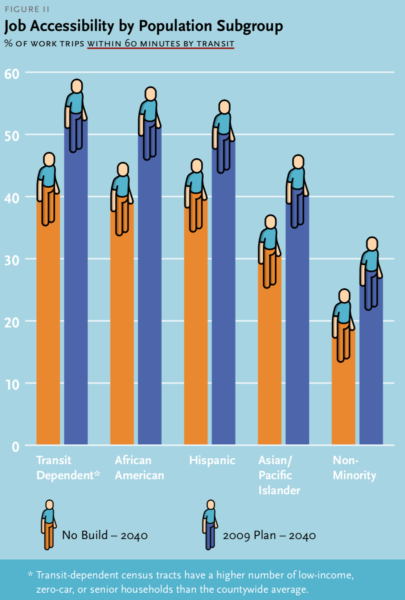 Source: Metro’s 2009 Long Range Transportation Plan, p. 54 (red underline added for emphasis)
Source: Metro’s 2009 Long Range Transportation Plan, p. 54 (red underline added for emphasis)
Secondly, the same ‘Environmental Justice’ section of the 2009 plan overstates the positive impact the 2009-plan proposed projects could have on communities of color. For at least 30 more years (through 2040), around half of LA County’s African American, Hispanic, and Asian American ‘subgroups’ and around 70 percent of ‘non-Minority subgroups’ will remain over an hour away from work by transit — an outcome that reflects the need for transportation officials to focus more meaningfully on changing their relationship with policies that govern housing and job growth, which underlie people’s need to travel. Finally this 30-year plan focuses heavily on work trips largely sustaining difficulty for people whose access and independence relies on transit.
III. Broadening the agency’s engagement with local officials and advocates
In the current decade, Metro accounted for city-controlled infrastructure by committing Measure M funds to cities through two programs: the ‘Multiyear Subregional Program’ (MSP) and continuing the ‘Local Return’ program. Metro also lowers cities’ costs of applying for state transportation funds by assigning Metro staff to write grant proposals for cities. Metro offers this service, called Technical Assistance, to cities free-of-charge.
In the years leading up to 2016, Metro officials built a broad-based coalition that included local officials and advocates to campaign for a sales tax measure, which officials expect will raise $120 billion over 40 years for transportation purposes. Subsequently, Metro’s CEO convened a Policy Advisory Council to help develop the 2020-50 Long Range Transportation Plan “and other work plans and policy areas that the Metro Board may request.” When the measure passed, coalition members representing local jurisdictions, consumers, and other transportation providers gained seats on the Metro Policy Advisory Council (PAC). Members of the PAC’s ‘consumers’ constituency group especially advocate for social equity.
In 2018, Metro Board adopted a 10-year strategic plan (Vision 2028), which validates equity’s importance to fulfilling Metro’s mission. In the plan Metro commits to prioritize communities with need, but stops short of designating who in the agency would guide and how they would hold the agency accountable to its equity commitment. At a public meeting in February, Metro CEO Phil Washington alluded to hiring an officer to champion equity for Metro. We support this notion and urge Metro to hire a CERO – Chief Equity & Race Officer – with multiple staff to define equity and set performance measures, which reinforces all four pillars of the Equity Platform Framework and helps fulfill Vision 2028 strategic goals.
Also in 2018, Metro directors promised to prioritize investments to communities based on need by adopting the Equity Platform Framework. With the framework, Metro challenges its staff to approach every decision with the goal of achieving equitable outcomes countywide. Immediately, the framework should impact how Metro redesigns Metro’s bus network (NextGen), develops a 2020-50 Long Range Transportation Plan, deliberates which projects to accelerate, designs a congestion pricing program, and distributes Measure M’s Active Transportation Funds.
What’s next? Centering equity at the outset of every initiative
In the next decade, Metro must move equitable decision-making from the margins to the center of all of its work. When Metro’s directors recently approved their initiative to “Reimagine LA County,” they reaffirmed their commitment to achieve equitable and sustainable outcomes through mobility. Later this month, Metro’s directors will have a chance to anchor equity in Metro’s congestion pricing and TNC fee studies at the outset.
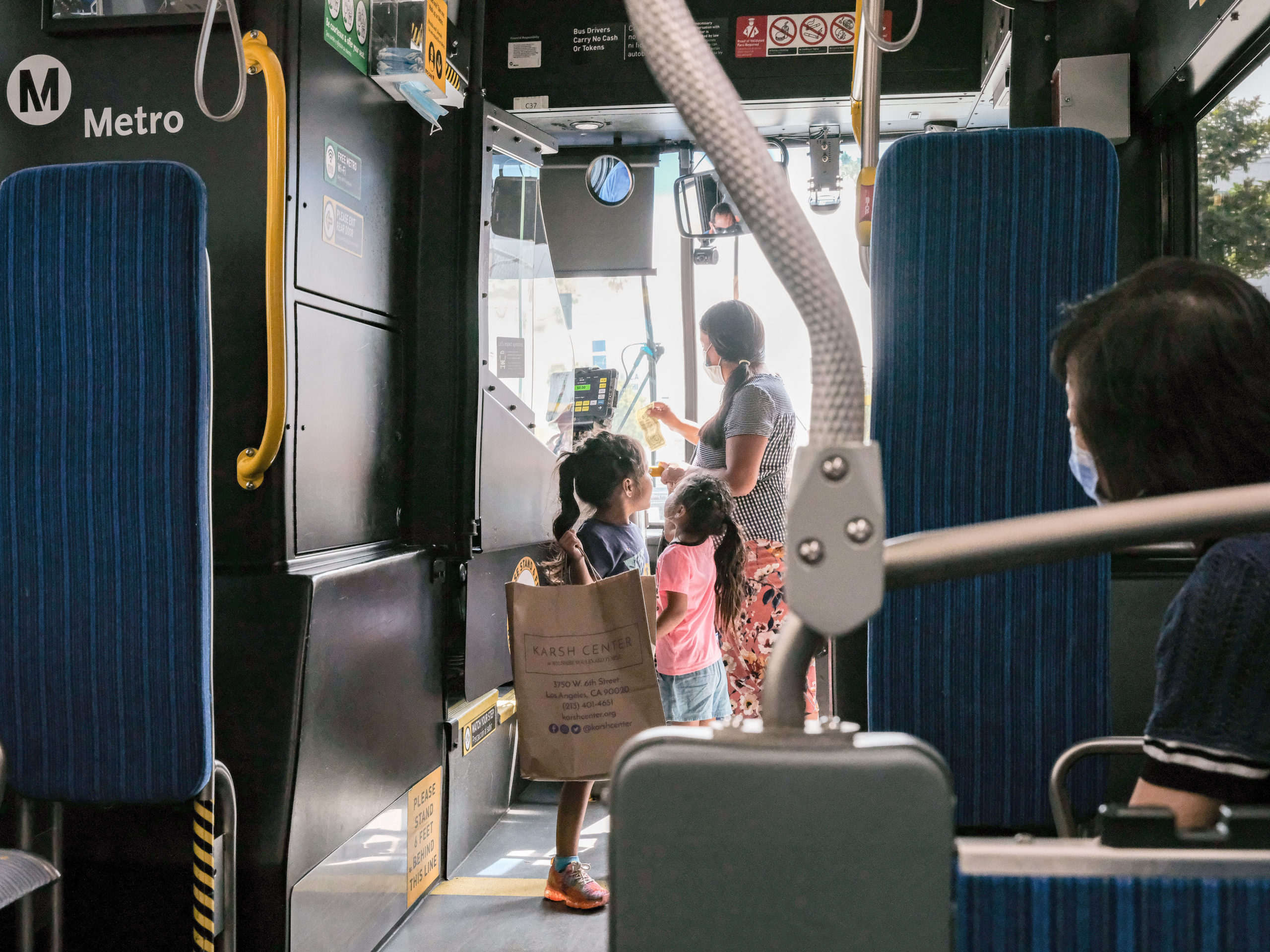



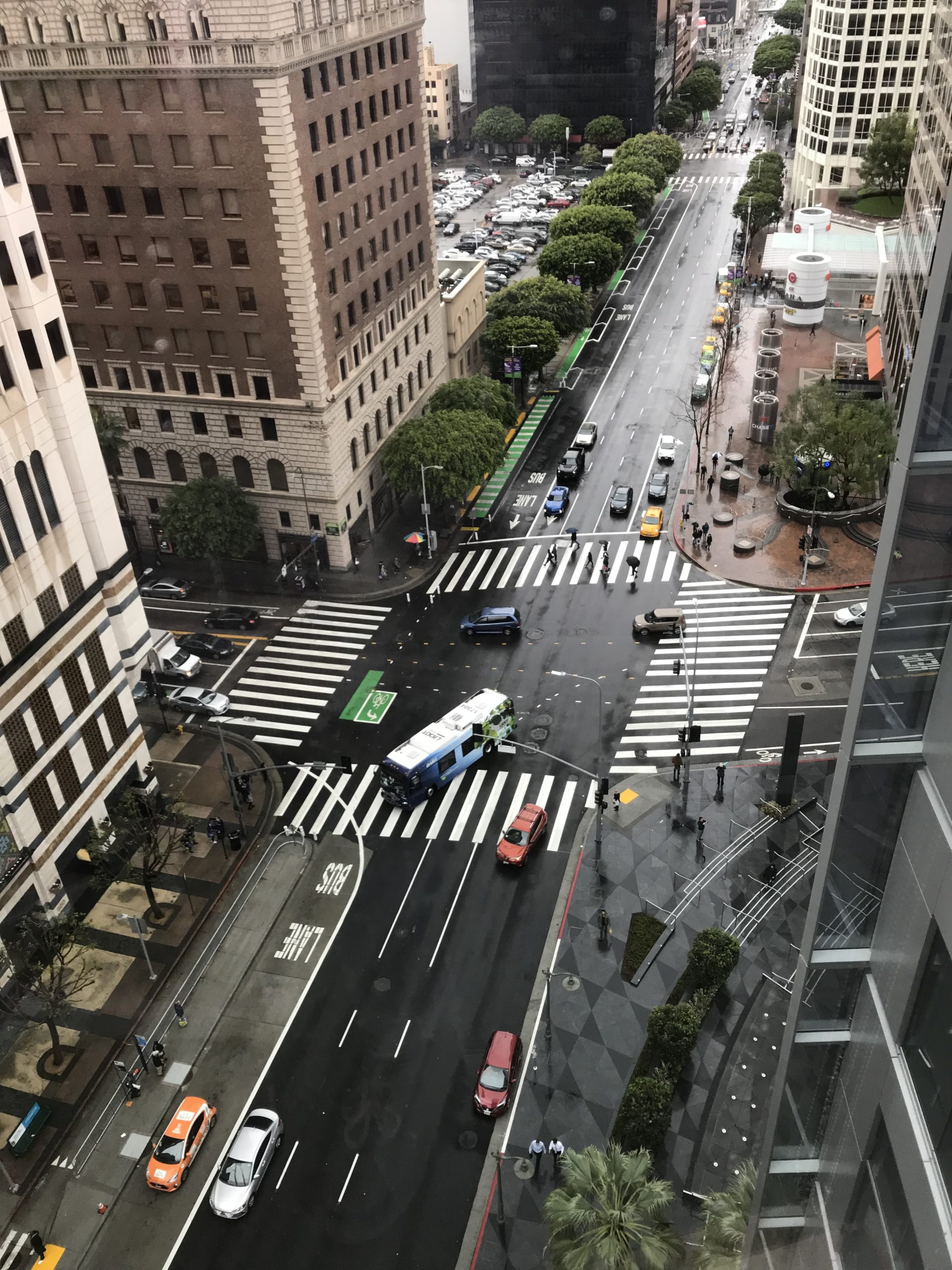
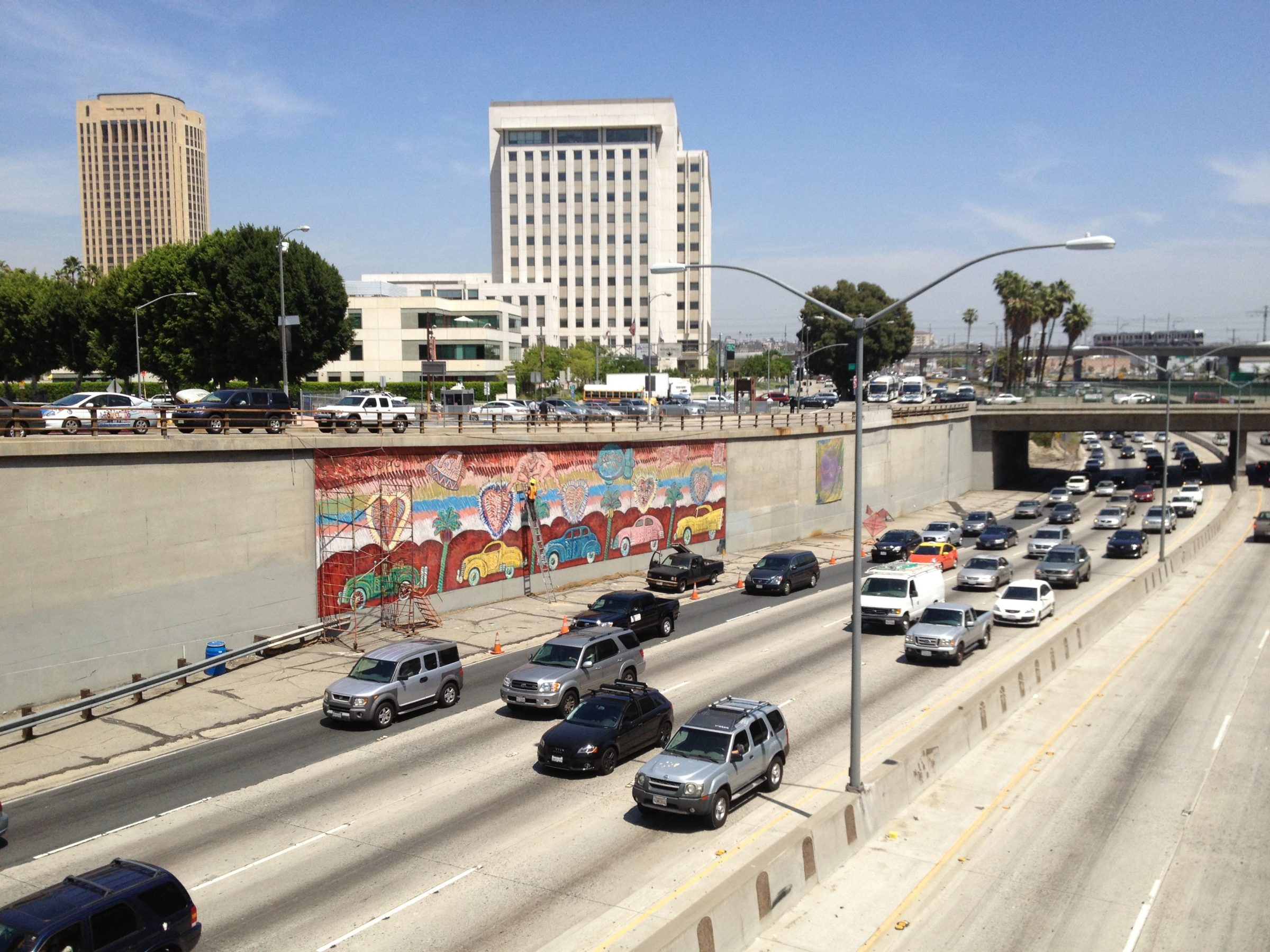
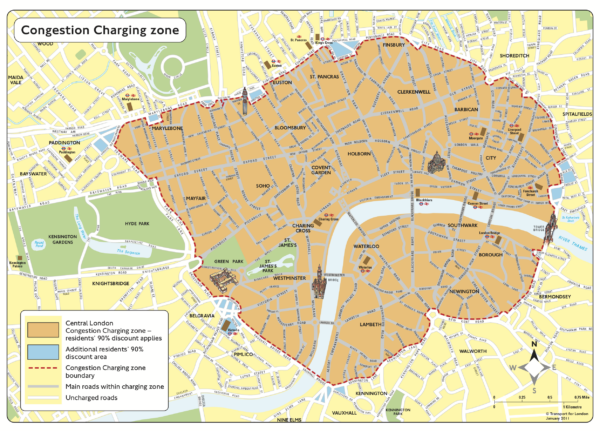
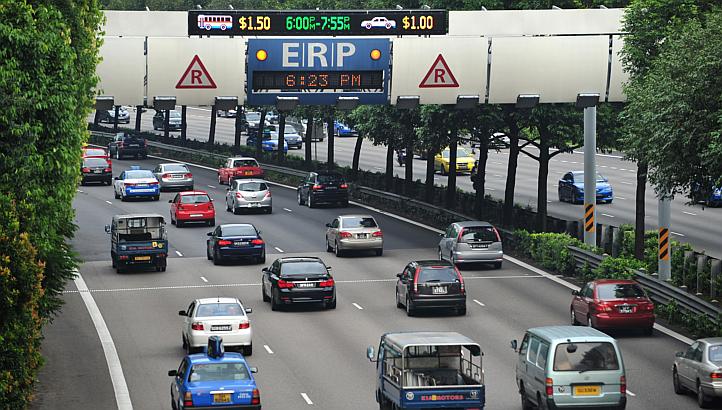
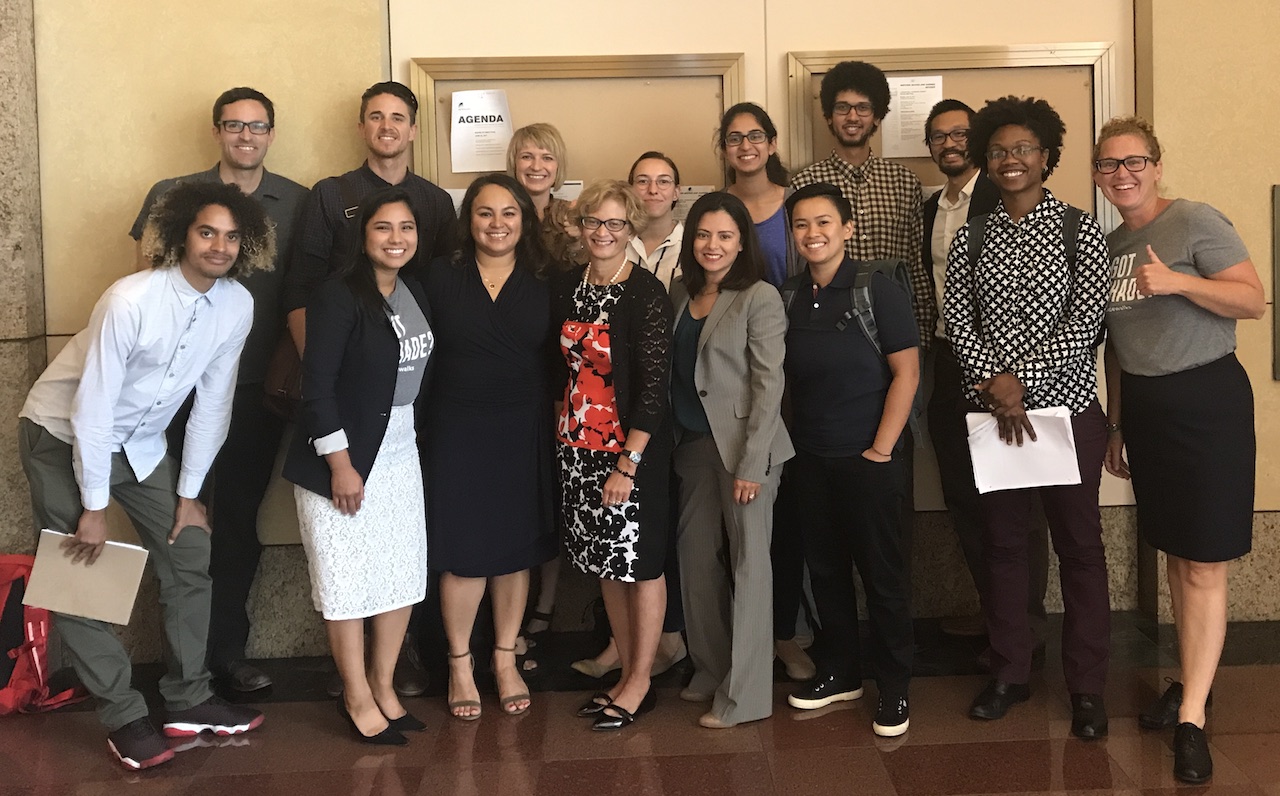

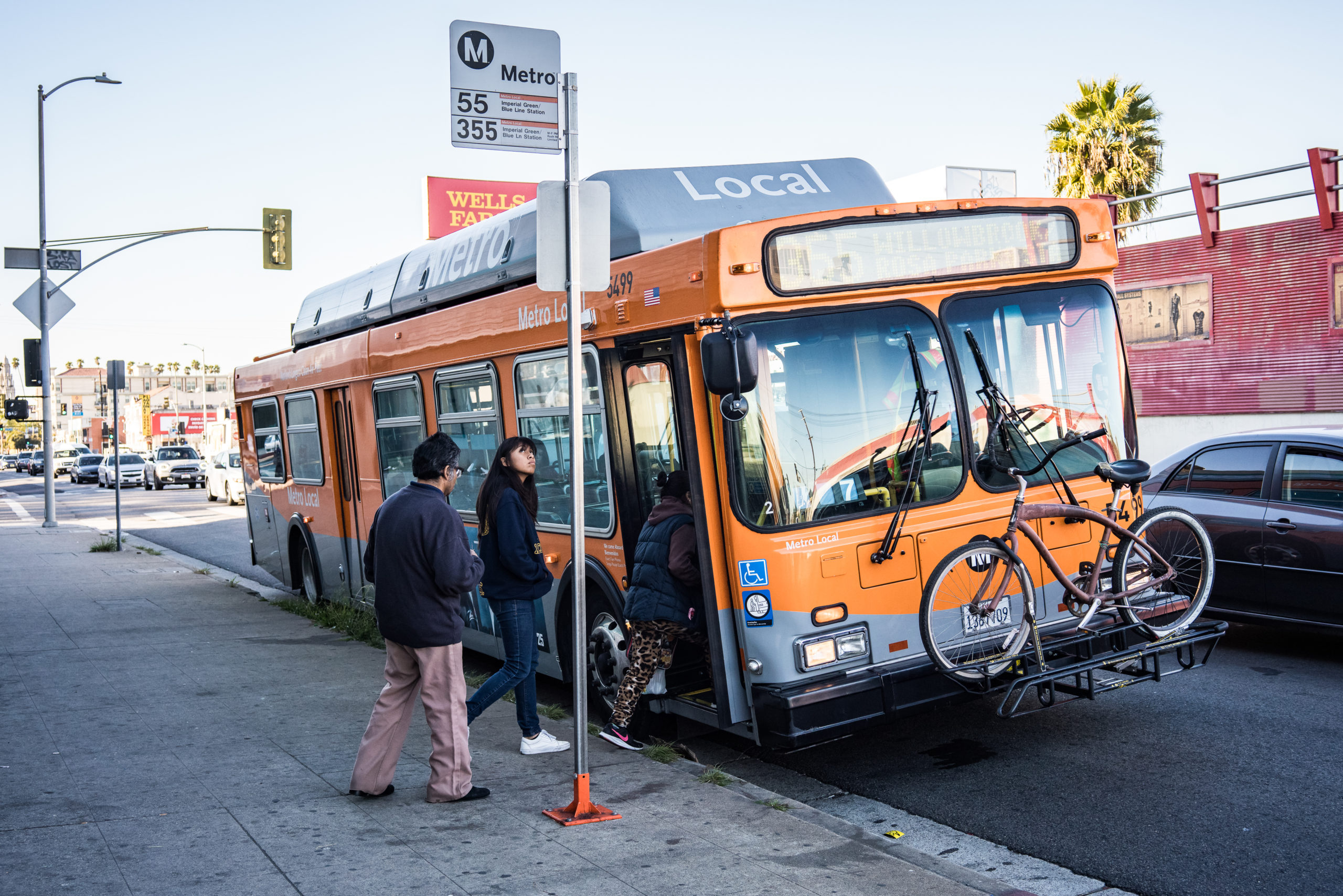








You must be logged in to post a comment.